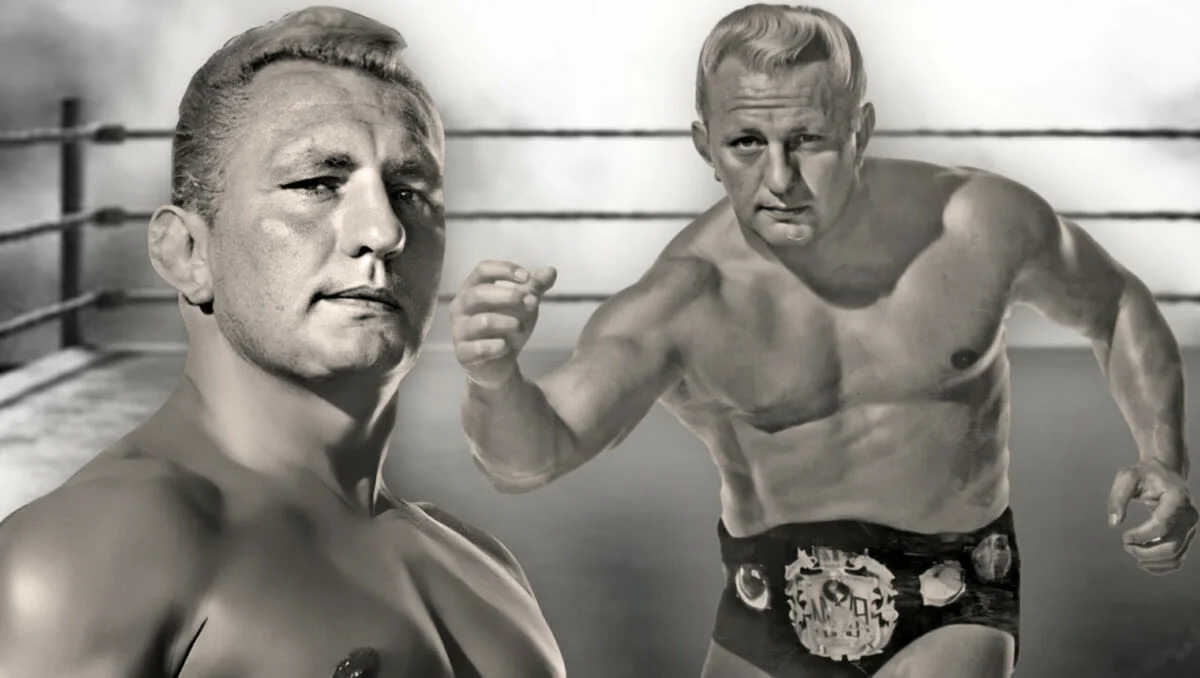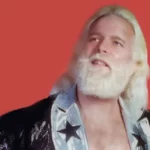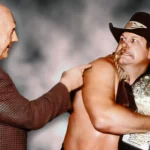Buckle up, wrestling fans! Get ready to dive into the wild and wonderful world of Buddy Rogers, also known as “The Nature Boy.” From his killer moves to his larger-than-life personality, Buddy Rogers left an unforgettable mark on the sport of wrestling. Let’s explore the man, the myth, and the legend!
Facts About Buddy Rogers
Buddy Rogers wasn’t just another wrestler; he was a true pioneer. Let’s dive into some interesting facts about the man who called himself “Nature Boy.”
1. The Figure-Four Leg Lock: His Signature Move
You know how some wrestlers have that one move everyone associates with them? For Buddy Rogers, it was the figure-four leg lock. This wasn’t just a random hold; it was his bread and butter, a move he used to trap opponents and snag victory after victory. It became so iconic that even today, wrestlers use it as a tribute to the “Nature Boy.”
2. The First-Ever WWE World Heavyweight Champion!
We’re talking history here! Back in 1963, Buddy Rogers achieved something truly remarkable – he became the very first WWE World Heavyweight Champion. It was a defining moment in his career and cemented his place in wrestling history. Holding that title wasn’t just about strength; it meant he was the best of the best.
3. Larger Than Life, Inside and Outside the Ring
Buddy Rogers wasn’t just a wrestler; he was a showman. With his flashy outfits and a personality that could fill any arena, he knew how to work a crowd. He understood that wrestling wasn’t just about the fights; it was about entertainment, and he was a master at it.
4. Epic Battles: Rogers vs. The Legends
What’s a great wrestler without some legendary rivals? Buddy Rogers had his fair share of those. His battles with icons like Lou Thesz and Bruno Sammartino were the stuff of legend. These weren’t just matches; they were clashes of titans that had fans on the edge of their seats. Those rivalries are still talked about today, and for good reason.
5. A Place in the Hall of Fame
In 1994, Buddy Rogers received one of the highest honors in the wrestling world – he was inducted into the WWE Hall of Fame. This posthumous recognition was a testament to his lasting impact on the sport. It’s proof that his legacy continues to inspire and influence wrestling to this day.
6. A Mentor to Future Wrestling Stars
Buddy’s influence went beyond his own in-ring career. He was known for taking young wrestlers under his wing, sharing his knowledge and experience to help them succeed. Some of those wrestlers went on to become legends themselves, proving that Buddy’s impact on the sport went far beyond his own accomplishments.
7. An Enduring Legacy
Buddy Rogers’ style and innovative techniques are still admired and emulated by wrestlers and wrestling promotions today. His charisma and showmanship helped shape the very fabric of professional wrestling, solidifying his place as a true icon. He might be gone, but his influence continues to resonate throughout the world of wrestling.
Why is Buddy Rogers Called “Nature Boy”?
Curious about how Buddy Rogers got the name “Nature Boy”? It wasn’t just a random choice. It all started when he decided to leave the dusty wrestling rings of Texas for greener pastures in Ohio.
Promoter Jack Pfefer saw something special in Rogers, something raw and instinctive, and started calling him “Natural Guy” to emphasize his innate talent. Rogers, always the showman, tweaked it to “Nature Boy,” and it just clicked. It fit perfectly with his natural athleticism and the undeniable charm he exuded in the ring.
This wasn’t just a wrestler; this was a force of nature!
The bleached-blond hair, the flashy outfits, that cocky grin – it all screamed “star.” The “Nature Boy” persona wasn’t just a name; it was a whole vibe. It captured his natural ability and the captivating aura that drew fans to him, especially during those early days of televised wrestling.
The “Nature Boy” moniker didn’t die with Buddy Rogers. One of the biggest names in wrestling history, “Nature Boy” Ric Flair, adopted the name and the whole flamboyant gimmick as a tribute to Rogers’ influence.
So yeah, when you hear “Nature Boy,” think of charisma, athleticism, and larger-than-life personalities – all the things that make wrestling so captivating. It’s a testament to Buddy Rogers’s lasting impact on the world of wrestling.
When Did Buddy Rogers Win the WWE Championship?
Let’s dive into Buddy Rogers’ historic championship win. Picture this: April 1963, the world of professional wrestling is buzzing with excitement. A tournament was held to crown the first-ever WWE World Heavyweight Champion, and Buddy Rogers emerged victorious!
He squared off against Antonino Rocca in the finals, and it was a match for the ages. This wasn’t just any other win; it marked a pivotal moment in wrestling history. This was the very first time the WWE Championship was decided in a tournament like this, making Rogers a true groundbreaker.
His victory did more than just earn him the title; it helped put the WWWF (which we know and love today as WWE) on the map as a major player in the world of wrestling. Rogers wasn’t just a great wrestler; he was a showman. He had this undeniable charisma and a flamboyant style that drew in crowds and made him a fan favorite.
His legendary “Nature Boy” persona, complete with bleached-blond hair and an air of confidence, became iconic. Imagine the impact – his larger-than-life personality went on to inspire generations of wrestlers, including big names like Ric Flair and Steve Austin.
Think about that for a second – Buddy Rogers’ influence can still be felt in the ring today. He wasn’t just a champion; he was a trendsetter who changed the game forever.
Where is Buddy Rogers Buried?
You can find Buddy Rogers’ final resting place at the Forest Lawn Cemetery in Rancho Mirage, California. This cemetery is a popular spot for Hollywood legends to spend their eternal rest.
His grave isn’t just a slab of stone; it’s a testament to the impact he had on professional wrestling. Fans from all walks of life make the journey to his graveside, leaving behind tokens of appreciation and sharing stories of his legendary career. It’s a powerful reminder of how deeply Rogers connected with people through the world of wrestling.
Here’s a simple breakdown for those planning a pilgrimage:
| Detail | Information |
|---|---|
| Cemetery: | Forest Lawn Cemetery |
| Location: | Rancho Mirage, California |
| Significance: | Final resting place of Buddy Rogers |
While the exact location of his grave within the sprawling cemetery might require a little exploration, the journey to pay homage to “Nature Boy” is well worth the effort, a chance to reflect on the legacy of a true wrestling icon amidst the serenity of Rancho Mirage.
Who is Known as the “Nature Boy” in WWE?
Back in the 1950s and 60s, wrestler Buddy Rogers was the original “Nature Boy.” He wasn’t just throwing punches and calling it a day. Rogers was all about trying out new moves, putting on a show, and living it up outside the ring. He was flashy, he was charismatic, and fans absolutely loved him.
But then came the 1970s, and the wrestling world met Ric Flair. Flair was a huge fan of Buddy Rogers and saw how powerful that “Nature Boy” nickname was. So, he decided to take it for himself!
Flair challenged Rogers to a match. This wasn’t just about winning a match; it was about inheriting a legacy. And Flair owned it.
With his dazzling robes, his larger-than-life personality, and those legendary promos, he became the “Nature Boy” for a whole new generation of wrestling fans. He took what Buddy Rogers started and turned it into something iconic.
So, while Buddy Rogers will always be remembered as the first “Nature Boy,” Ric Flair became practically synonymous with the name. He embraced the flamboyance, the charisma, and the showmanship, becoming one of the most recognizable figures in wrestling history.
Who Made “Nature Boy” Famous?
This story starts with nature lover Eden Ahbez, who wrote “Nature Boy” about a friend, Bill Pester, who influenced his life and beliefs.
But a song sitting on paper doesn’t become a hit on its own. That’s where the legendary Nat King Cole comes in. In 1948, Cole was already a big name in music. Ahbez, determined to get his song heard, slipped Cole the sheet music for “Nature Boy” backstage at a show. Cole initially brushed it aside, but Ahbez was persistent. He believed in his song.
And guess what? His persistence paid off! Cole eventually gave “Nature Boy” a listen, and the rest, as they say, is history.
Cole’s recording of “Nature Boy” became a sensation. People couldn’t get enough of its haunting melody and simple yet profound lyrics about love and kindness. The song soared to the top of the charts and quickly cemented its place as a timeless classic.
“Nature Boy” wasn’t just a catchy tune; its popularity signaled a shift away from the big band sounds of the swing era and towards the emergence of pop music as we know it.
Even today, “Nature Boy” continues to resonate with audiences. It’s been covered by countless artists across different genres, proving its enduring appeal and solidifying its legacy as one of the most beloved songs of all time.
Who Was the Black Scorpion?
“The Black Scorpion” wasn’t just some random title; it was attached to Benjamin Adekunle, a Nigerian military officer who played a major role during the Nigerian Civil War, which raged from 1967 to 1970.
Adekunle became known for his no-nonsense approach to commanding troops. Some might even call his tactics ruthless. He was dead-set on keeping Nigeria unified, and he was willing to push his forces to the limit to make it happen.
When you’re dealing with conflict, things rarely stay clean and simple. His methods, while effective in some ways, earned him a reputation that was as complex as the war itself. Some folks saw him as a hero, a symbol of strength who fought tooth and nail for his nation. Others, though, saw a darker side. They pointed to accusations of actions that crossed the line – things that would be considered atrocities and human rights violations.
So, why the nickname “The Black Scorpion”? Scorpions are creatures that demand your attention. They’re tough, they’re venomous, and they’re not afraid to defend themselves. This image perfectly mirrored Adekunle’s military style. He was seen as a force to be reckoned with, both feared and respected on the battlefield.
Even today, long after the war ended, Adekunle’s legacy remains a hot topic. Historians and everyday people are still trying to make sense of the man behind the nickname. What motivated him? Was he a hero, a villain, or something in between? It’s this complexity that makes his story so fascinating. His name, forever linked to that powerful image of the “Black Scorpion,” is a reminder of the tangled, often uncomfortable truths that emerge from times of war.
Want to learn more? Check out this book:
- Awoyinfa, D. (2017). Benjamin Adekunle: The Black Scorpion. Lagos: Safari Books (Nigeria).
What Happened to the “Nature Boy”?
While we all know the legendary “Nature Boy” Buddy Rogers, the name “Nature Boy” has recently been associated with a much darker story.
Eligio Bishop, who also called himself “Nature Boy,” was no wrestling hero. He led a group called “Carbon Nation,” which many people believe was actually a dangerous cult. This “Nature Boy” used his charisma not to entertain, but to control and exploit his followers.
Former members of “Carbon Nation” bravely shared their experiences, describing a pattern of manipulation, abuse, and even violence. They painted a picture of a leader who used fear and intimidation to get his way, forcing his followers to do things they didn’t want to do.
The legal system ultimately held Bishop accountable for his actions. He was found guilty on multiple charges and sentenced to life in prison without the possibility of parole.
This case reminds us that things aren’t always what they seem. Just because someone calls themselves a certain name or presents a certain image, it doesn’t mean they are who they claim to be. The contrast between Buddy Rogers, the wrestling legend, and Eligio Bishop, the convicted criminal, highlights how easily a name can be twisted and used for harmful purposes.
Why Didn’t Cody Rhodes Wear Knee Pads?
Cody Rhodes’ initial aversion to knee pads might seem odd in a profession known for its high-impact moves, but for Cody, it was all about capturing a certain classic wrestling aesthetic.
Think back to legends like Buddy Rogers – these guys were all about larger-than-life personas and a distinct visual style. For Cody, knee pads felt like a modern addition that clashed with the traditional look he was going for. He wanted to embody that old-school spirit, and to him, that meant ditching the knee protection.
It wasn’t just about tradition, though. Cody felt strongly that knee pads detracted from the overall visual impact of his performance. He saw them as clunky and distracting, potentially hindering the smooth flow and artistry of his movements in the ring.
Around 2012-2013, probably after one too many moonsaults, he started incorporating knee pads into his gear, suggesting that practicality, and the need for self-preservation, eventually won out.
Even so, his initial resistance to knee pads sparked a lot of debate among fans. Some admired his dedication to the old ways, while others questioned his priorities. Ultimately, this willingness to court controversy, to do things his own way, became a key part of Cody’s identity in the wrestling world.
Some experts believe that Cody’s eventual adoption of knee pads might have been a strategic move as well. By initially rejecting them, he tapped into a sense of nostalgia among fans who yearned for the classic days of wrestling. Then, by eventually donning the protective gear, he showed a willingness to evolve and adapt, perhaps further endearing himself to a wider audience.
It’s important to note that these are just interpretations, and the true motivations behind Cody’s choices might be more complex. Nevertheless, his relationship with knee pads provides a fascinating glimpse into the interplay between tradition, practicality, and personal branding in the world of professional wrestling.
Where Was the “Nature Boy” Ric Flair Born?
While he’s known for his flamboyant personality and legendary wrestling career, Ric Flair’s beginnings were actually pretty grounded.
He was born in Memphis, Tennessee on February 25, 1949. Now, here’s where things get interesting. His birth name wasn’t actually Ric Flair. He was born Fred Phillips.
Flair was adopted by Richard and Kathleen Fliehr through the Tennessee Children’s Home Society and renamed Richard Morgan Fliehr. The family settled in Edina, Minnesota.
It makes you wonder if maybe, just maybe, a little bit of that “Minnesota nice” is hiding somewhere beneath all that “Nature Boy” charisma!
Just a heads up: There’s still some debate and uncertainty about the specifics of Flair’s adoption. Some folks say it might have been closed, meaning details weren’t publicly shared. This makes it tricky to know everything for sure, and it’s likely some of these details will continue to be researched and discussed in the years to come.
Who Else Sang “Nature Boy”?
“Nature Boy” wasn’t just connected to Buddy Rogers. Plenty of other big-time musicians made that song their own.
“Nature Boy” was a huge hit for Nat King Cole back in 1948. It was a turning point in Cole’s career, helping him make a name for himself as a solo performer.
While Nat King Cole’s version is the one most folks remember, a whole bunch of other incredible artists have covered “Nature Boy” over the years. We’re talking legends like Frank Sinatra, Sarah Vaughan, Tony Bennett, and even Lady Gaga! Each artist brought their unique flavor to the song, proving just how timeless and versatile “Nature Boy” really is.
But the influence of “Nature Boy” doesn’t stop there! The Beatles were inspired by this very song when they wrote their hit “Across the Universe”.
It’s pretty amazing to think how one song, “Nature Boy”, has had such a wild ride through music history. From a wrestler’s nickname to a jazz hit to inspiring one of the greatest bands ever, “Nature Boy” proves that great music really does stand the test of time.
Just the facts about Frankie Edgar will make you scream. You won’t get enough of facts about Tony Atlas when you unleash them on your friends.
- Unveiling the Enigma: Mansoureh Khojasteh Bagherzadeh’s Public Appearances & Private Life in Iran - July 18, 2025
- Unveiling the Mystery: Mansoureh Khojasteh Bagherzadeh’s Husband: A Rare Glimpse into a Private Life - July 18, 2025
- Unveiling Masoud Khamenei’s Mother: Power, Influence, and Iran’s Future - July 18, 2025
















